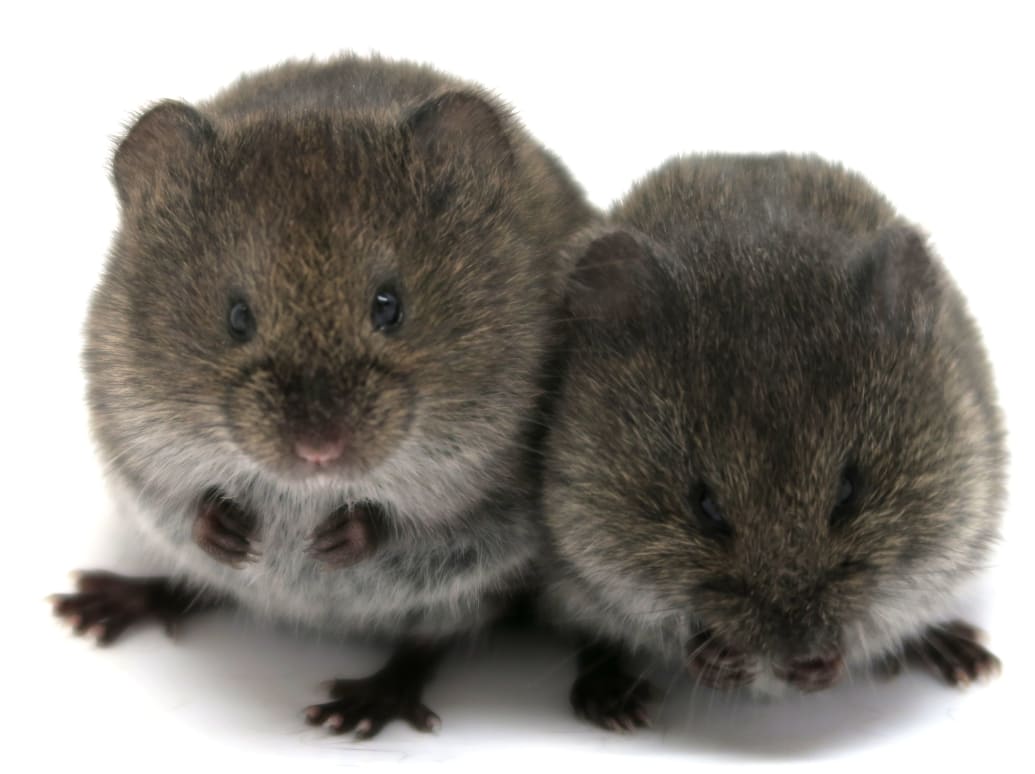“Omnia vincit amor,” wrote the poet Virgil over 2,000 years ago at the end of a collection of bucolic poetry, the first recorded instance of the phrase “love conquers all.” Important context is that this moment was not actually triumphant: In the eclogue, the heartbroken speaker is bemoaning an unrequited love.
Still, this bold declaration about the power of love seems to have struck a cultural nerve, and it’s something we would all like to believe is true. Well, now we have scientific evidence that it is: Prairie voles. that were missing a biological receptor for the so-called “love hormone” did just fine at bonding with their mates, delivering pups, and nurturing their young. This research was published on Jan. 27 in the journal Neuron.
Unlike similar species, prarie voles mate for life. Until now, it was assumed oxytocin played a critical role in encouraging monogamy among the species.
“We were all shocked that no matter how many different ways we tried to test this, the voles demonstrated a very robust social attachment with their sexual partner, as strong as their normal counterparts,” Devanand Manoli, a psychiatry researcher at the University of California, San Francisco who led the research, said in a press release.
Prairie voles.
Picasa
Previous studies that injected voles with hormones or drugs to increase or reduce their oxytocin levels had demonstrated that a vole lacking oxytocin would not be able to form bonds with their partner. But according to Manoli and his team, these studies were conducted on adult animals whose brain circuitry may have been wired in some fundamental way prior to oxytocin deprivation. Additionally, drugs can be “dirty,” Manoli said, as they may have off-target effects on a slew of pathways and inadvertently introduce active compounds other than oxytocin that may affect voles’ behavior.
In contrast, Manoli and his colleagues used CRISPR, a tool that allows researchers to edit the genetic code, to snip out a portion of the gene that codes for the oxytocin receptor in vole embryos, rendering it useless. Prairie voles that do not produce this receptor would not be able to recognize and respond to the presence of oxytocin—so if oxytocin was the make-or-break for spousal and parental love, one would expect to see loveless vole marriages and neglected litters. But on the contrary, the researchers observed that pair-bonding behaviors, nursing, and pup weaning occurred in prairie voles lacking this receptor.
These findings also suggest an inverse truth that will have to be tested in follow-up studies: If lacking the ability to respond to oxytocin didn’t preclude voles from forming social attachments, giving a living organism extra oxytocin may not spark bonding where it didn’t exist before.
“For at least the last 10 years, people have been hoping for the possibility of oxytocin as a powerful therapeutic for helping people with social cognitive impairments due to conditions ranging from autism to schizophrenia,” Manoli said. “This research shows that there likely isn’t a magic bullet for something as complex and nuanced as social behavior.”
Now that the researchers have created voles lacking the oxytocin receptor, Manoli said that he hopes the animals can be used in future experiments to study the origin of anxiety and attachment, as well as to act as a comparison with other often-studied organisms like mice.
So the voles, quite literally, found love in a hopeless place. If that’s not a ringing endorsement of the power of love, I don’t know what is.



